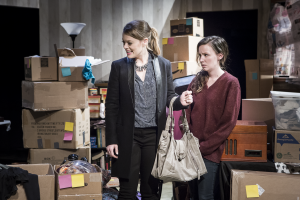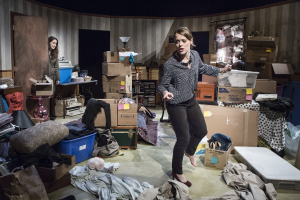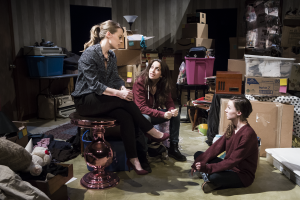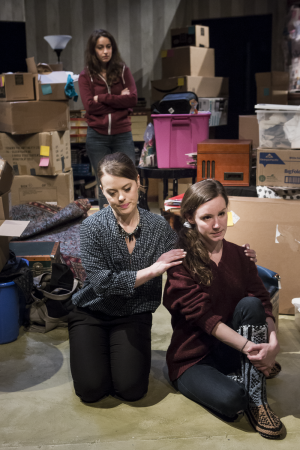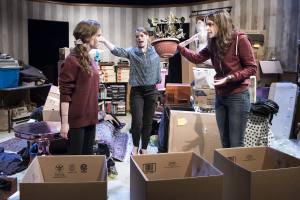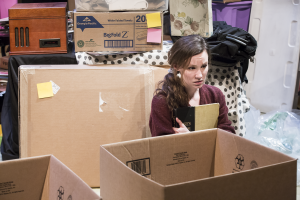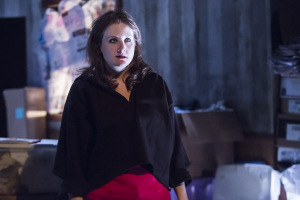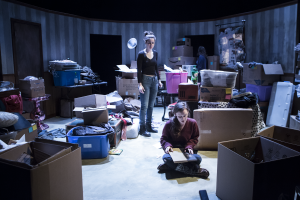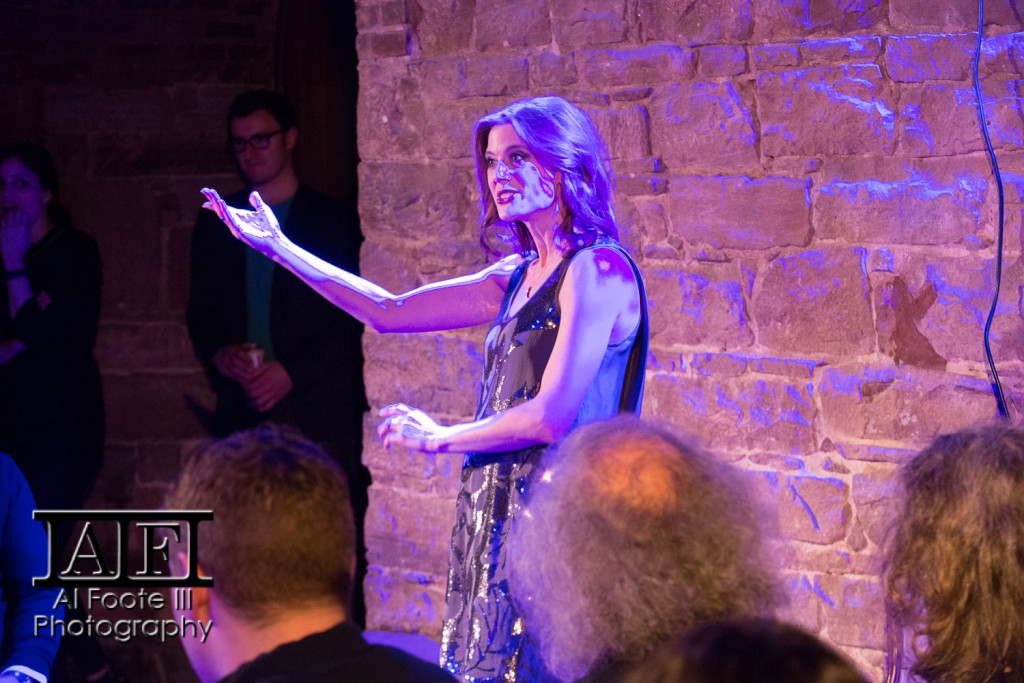These images are from the show Keep by Francesca Pazniokas, directed by Stephanie C. Cunningham and produced by Wide Eyed Productions and Mastodon Theatre Company.
Keep looks at the relationships of four sisters who have traversed a difficult childhood into adulthood with more or less success (depending on how you measure success). It takes place in the cluttered home of one of the sisters, Nicola. By cluttered, we’re talking hoarder. While it makes of a visually interesting set, it also makes it very hard to guide the eye to what is important. To help the viewer, I made use of radial and graduated filters to give make certain areas subtly brighter and therefore catch the eye.
